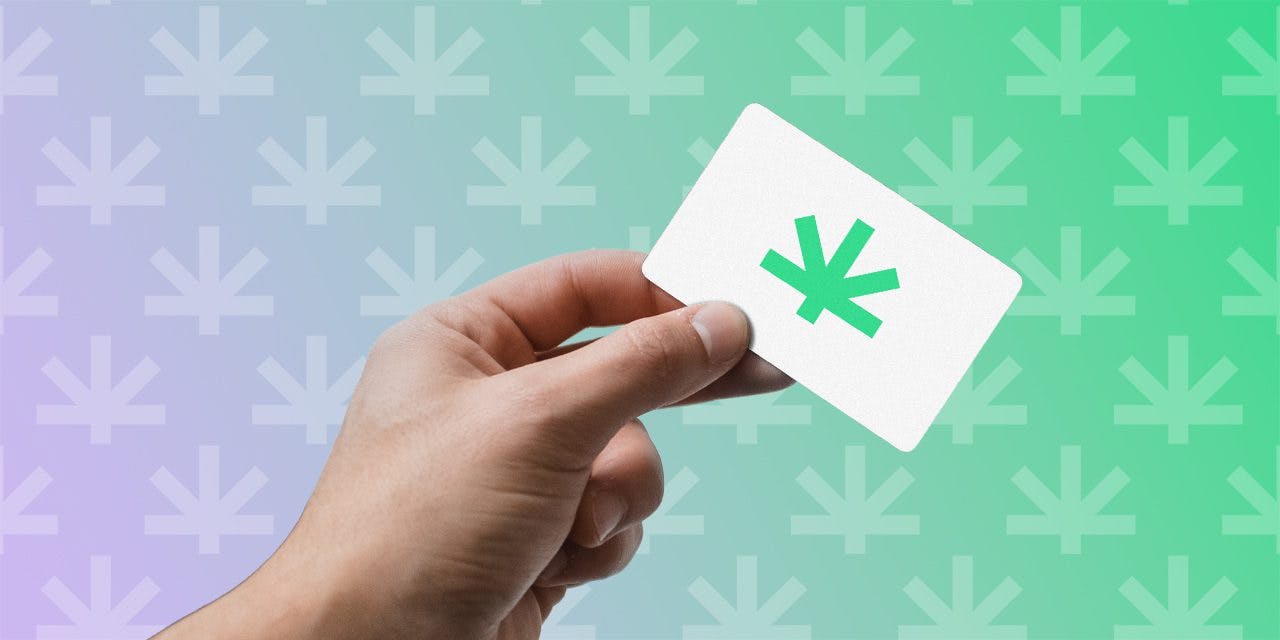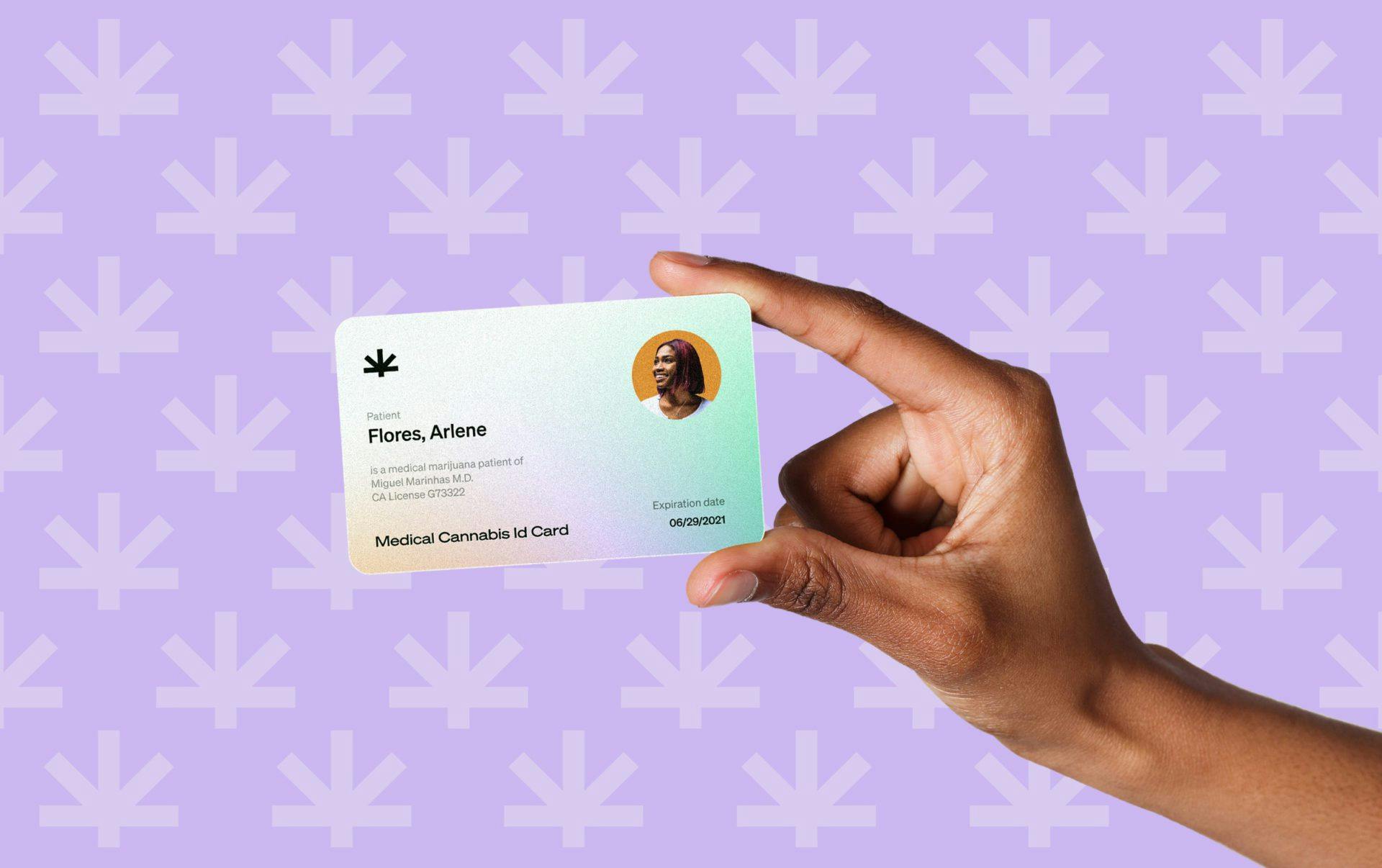What Does a Medical Marijuana Card Look Like?

Content reviewed by

Ruth LemonVP of Operations
When first applying for your state’s medical marijuana program, one of the questions is, “What does a medical marijuana card look like?” Most registry cards look like an average ID card with the patient’s name, date of birth, expiration date and other relevant information.
However, despite their similarities, medical marijuana cards vary in design and requirements from state to state. Some states issue cards to both patients and caregivers, while others only supply virtual cards, keeping patients’ names in an online registry. This article breaks down what to know about physical medical marijuana cards and how to use them to obtain MMJ.
Get Your Medical Card
Connect with a licensed physician online in minutes.
What Does a Medical Marijuana Card Look Like?
Every state’s medical marijuana card will look different, with unique designs and information pertinent to that state’s laws and regulations. Despite these variations, you can reasonably expect the following consistencies with each type of MMJ card.

Front
On the card’s front, most state MMJ IDs will display your photo, a large clear image of your face, making it easy for dispensary workers and law officials to recognize you as the individual allowed to use medical marijuana.
Alongside your photo, the identification card will likely include:
- A unique patient ID number.
- Your full legal name.
- Your date of birth.
- Your residential address in the card-issuing state.
You should also expect to see something like “date issued” and “date expired,” which indicate the period in which your medical cannabis card is valid. The length of this validity varies from state to state and even depends on your medical condition, ranging anywhere from 90 days to multiple years.
Depending on the rules in your state, the front of your card may also indicate whether you’re allowed to cultivate your own cannabis. Some medical patients may obtain special permission to do so, which would be made clear on the ID card. However, in other states, at-home cultivation is fully allowed for patients and doesn’t need a distinction, while others still don’t allow any home cultivation – make sure to check your state’s cannabis laws.
Back
On the reverse side of your card, you’ll likely see a black magnetic strip similar to those found on a credit or debit card. This stripe is sometimes on the front of the card, but this depends on your state.
Budtenders swipe the black stripe at dispensaries to verify your status as a patient with the state’s registry and keep track of your dispensary visits. Some states will have the dispensary swipe your MMJ card when you purchase cannabis to keep track of the amount of medicine purchased.
Finally, your medical marijuana card will likely include warnings or legal text on the backside. These technical statements are reminders that medical marijuana agencies must adhere to all state laws.
What to Expect in Your State
Most states with medical marijuana programs will provide a physical registry card once you’ve completed your application. However, some states (like Texas) forgo the card, opting to keep an up-to-date digital registry that dispensaries and law enforcement can cross-reference with your ID card.
Here’s a breakdown of what to expect in your state.
States with Physical Medical Marijuana Cards
- Alabama
- Alaska
- Arizona
- Arkansas
- California
- Colorado
- Connecticut
- Delaware
- Florida
- Hawaii
- Illinois
- Louisiana – faxed certificate – a copy can be obtained from your pharmacist
- Maine – paper certificate only
- Maryland
- Massachusetts
- Michigan
- Missouri
- Montana
- Nevada
- New Hampshire
- New Mexico
- New York
- New Jersey
- North Dakota
- Ohio
- Oklahoma
- Oregon
- Pennsylvania
- Rhode Island
- South Dakota
- Utah
- Vermont
- Washington
- West Virginia
States with Virtual Medical Marijuana Cards
How to Use Your Medical Marijuana Card
Now that we’ve covered what to expect when looking at a medical marijuana card, let’s discuss using them in different situations.
State dispensaries will require you to present your MMJ card (and sometimes another form of ID) to enter the facility and purchase cannabis products.
Then, upon purchase, some states will require the budtender to swipe your card once more and keep track of total possession against a monthly limit. However, some states don’t need to see your MMJ card a second time and will track the amount of cannabis purchased via a phone number or other identifier. Either way, most medical programs will keep track of total purchase amounts.
This method lets dispensaries know whether you’re approaching your allotted cannabis amount for each period and if they can’t sell you any more products. Without a physical medical marijuana card or registry, this information would be harder to track.
Having a physical medical marijuana card is also crucial if you get stopped by law enforcement. An MMJ card protects holders from being charged for possession or use of cannabis in legalized states, though this does not protect you if you act illegally. This includes operating motor vehicles under the influence of cannabis (which qualifies for a DUI), possessing/cultivating more than your state’s authorized limit, improperly storing cannabis products in your vehicle, or crossing state lines.
Get your medical marijuana card
Connect with a licensed physician online in minutes.

